Conservation and restoration: honoring the seaplane aviation’s history
After the construction of the Latécoère assembly and flight-test base in 1930, followed by Les Hourtiquets seaplane base in the late 1930s, forming a real gateway to the Atlantic, Biscarrosse was the natural choice for the creation of a seaplane museum unlike any other in all of Europe.
Safeguarding our unique heritage
The museum set itself the task of retracing the history of seaplanes around the world, from the very first innovators on their strange machines to the latest models of the present day.
To do this, it gathered collections of:
- Archives
- Photographic documentation
- Old maps
- Autographs
- First editions
- Flight suits
- Decorations
- Uniforms
- Logbooks
- Flight logs
- Famous pilots’ personal keepsakes
- Spare parts
- Engines
- Propellers
- Model seaplanes (some of them very old)
- Interior decorations
- Original paintings and reproductions
- Posters
- Contemporary advertising documents from the period
- Etc.
This historical presentation occupies 13,500 sq.ft. (1,250 m²) of floor space in buildings that, in some cases, date back to the site’s early days when they housed workers from Les Hourtiquets seaplane base.
Intact seaplanes are extremely rare nowadays. Weather and marine corrosion have taken their toll. Aside from a few flying boats restored by enthusiasts, the seaplanes that have been salvaged are all in museums today.
So, why not in ours? In the main exhibition hall, spanning more than 5,000 sq.ft. (480 m²), seaplanes from 1912 through the 1980s, either restored or undergoing restoration, are on display.
Pictures of our salvage and conservation work
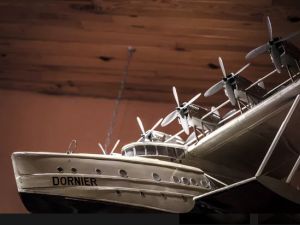
Dornier DO-X
Collection Musée de l'Hydraviation - Origine PERILLAT
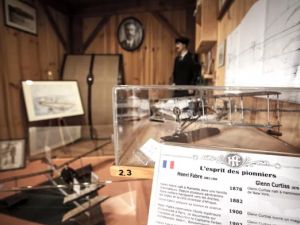
Henri Fabre
Collection Musée de l'Hydraviation - Origine PERILLAT

Combinaison Latécoère
Collection Musée de l'Hydraviation - Origine PERILLAT
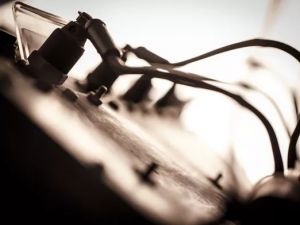
Moteur Hispano Suiza
Collection Musée de l'Hydraviation - Origine PERILLAT
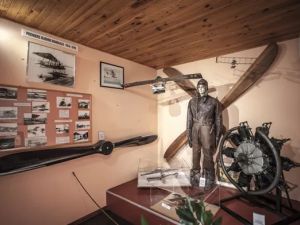
1re Guerre Mondiale
Collection Musée de l'Hydraviation - Origine PERILLAT

L'Aéropostale
Collection Musée de l'Hydraviation - Origine PERILLAT
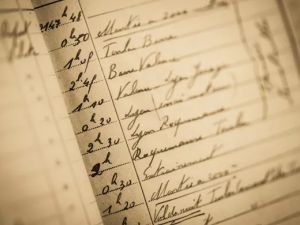
Carnet de vol
Collection Musée de l'Hydraviation - Origine PERILLAT
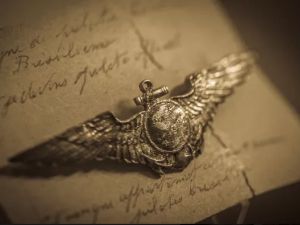
Documentation
Collection Musée de l'Hydraviation - Origine PERILLAT
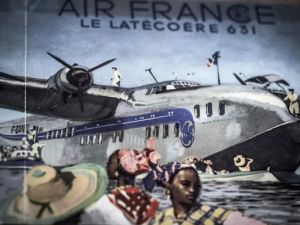
Biscarrosse Fort-de-France
Collection Musée de l'Hydraviation - Origine PERILLAT
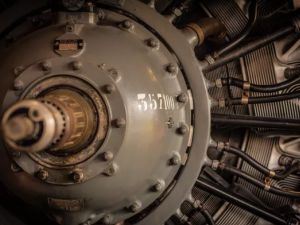
Moteur Pratt-Witney
Collection Musée de l'Hydraviation - Origine PERILLAT
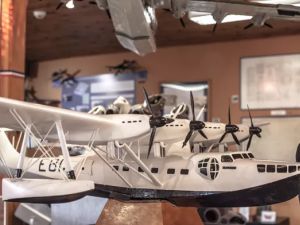
Maquette de l'Aéronavale Française
Collection Musée de l'Hydraviation - Origine PERILLAT
The museum is committed to preserving this heritage, along with the production techniques inherent to the industry.
The Museum's Collections
Grumman Albatross Collection Documentation Center








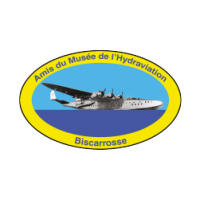

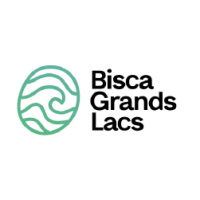







![[📢 INFORMATION IMPORTANTE — HORAIRES D’HIVER]
Le Musée de l’Hydraviation adoptera des horaires spécifiques du 1er au 15 décembre. Durant cette période,...](/scripts/files/6925e201a84680.50309454/589097034_1366871525228429_7363672799318361347_n.jpg)



![[Les gardiens de la biodiversité : nature, enfance et aviation🌿🛩️]
À deux pas d’un site classé Natura 2000, le Musée de l’Hydraviation bénéficie d’un...](/scripts/files/68ed22b7353714.05967911/559634324_1330780475504201_3233907854593661794_n.jpg)
